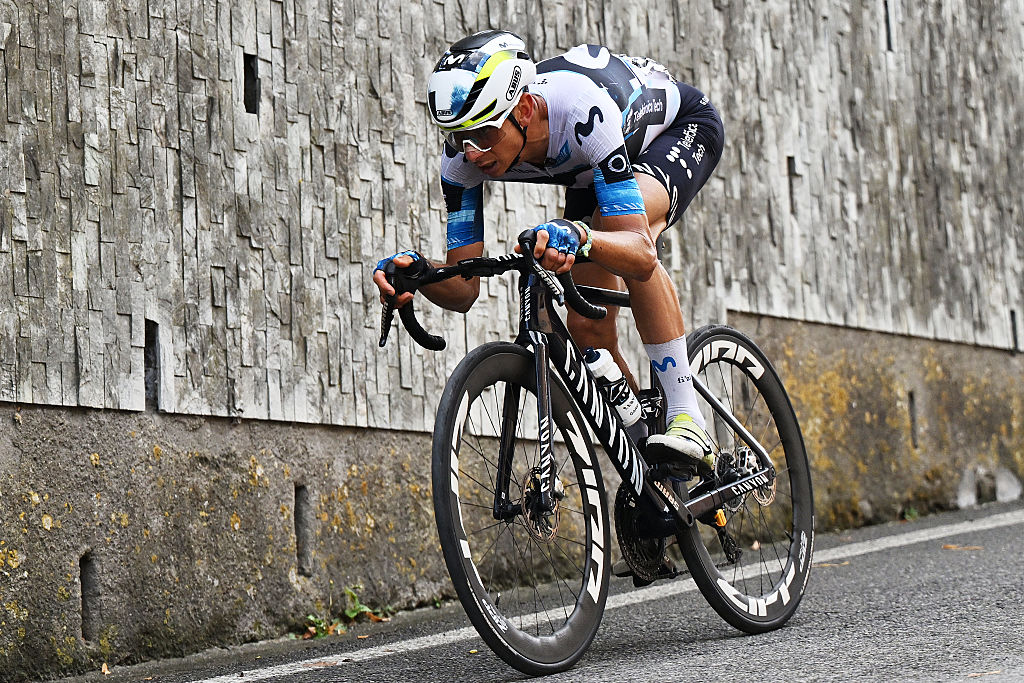Why Katie Compton's doping case is so shocking
'US rider has either been lying about being against doping or is another victim of contamination'

The news that US cyclo-cross legend Katie Compton has been banned for four years after testing positive for an anabolic steroid, prematurely truncating her storied career, was unexpected and shocking in many ways, but the case should send alarm bells across the professional peloton.
It's a case of an athlete who submitted regularly to the Athlete Biological Passport, who was outspoken against doping, but whose career has now ended because of the ban.
Compton was tested out of competition on September 16, 2020, in one of 90 controls performed between the US Anti-Doping Agency (USADA), the UCI, or other anti-doping agencies since January 5, 2014. The initial test showed no indication of the ultimate result: a positive for testosterone. Yet USADA, months later, re-examined the sample and detected traces of the steroid hormone using the same test that cost Floyd Landis the 2006 Tour de France.
In the data file shared with Cyclingnews, Compton's testosterone/epitestosterone ratio - the one that raised red flags in Landis' doping control - did not stand out at 1.5, which is well within the normal range.
However, when compared across seven years of data, different values stood out: a peak of androsterone and etiocholanolone - both of which are metabolites of testosterone.
The unusual peak raised flags on Compton's passport, leading USADA to investigate further. Because both men's and women's bodies make their own testosterone, USADA looked at the Carbon Isotope Ratio (CIR), which would determine if the origin of the hormone was natural or of an external (exogenous) origin.
Unfortunately for Compton, the test determined the source was exogenous. Also unfortunately for Compton, the news of the CIR result came five months after she'd given the sample, making it highly unlikely she could provide proof it came from a contaminated supplement or food.
The latest race content, interviews, features, reviews and expert buying guides, direct to your inbox!
Compton told Cyclingnews she suspected some beef she'd had for dinner the night before the doping control was to blame. The meat was not organic and, in the US, the FDA allows ranchers to implant their cattle with a wide range of hormones, including testosterone, to promote growth provided the levels of the hormones are "below a safe level" when the cows are slaughtered.
In 2010, Alberto Contador argued his clenbuterol positive was the result of contaminated meat, an assertion that failed to sway the World Anti-Doping Agency (WADA) or the Court of Arbitration for Sport (CAS), mainly because Spanish beef producers don't use the substance. But other athletes have avoided sporting bans after testing positive for the drug due to eating meat from China, Mexico or Guatemala - leading WADA to revise its policies.
Compton is in the same boat as runner Shelby Houlihan, who missed the Tokyo Olympics after testing positive for nandrolone, which she blamed on a pork burrito. In 2020, long jumper Jarrion Lawson's four-year ban was overturned after the CAS decided his Trenbolone positive was likely caused by a beef bowl from a Japanese restaurant.
However, even the top female cyclo-cross racers don't earn as much as an athletics champion like Lawson and, after spending $8,000 on lawyers to fight the case, Compton's partner Mark Legg said: "We couldn’t keep throwing money at a hopeless situation".
Even if they had been successful, there are no mechanisms to recoup the money in the case of a false positive in the anti-doping system.
The case is lose-lose for Compton's fans and fellow athletes alike; she has either been lying about being against doping or she's another victim of contamination in supplements or the industrial-farming food chain. Either way, there is no getting around the anti-doping system.
Hajo Seppelt and the German broadcaster ARD - who helped uncover the Russian state-sponsored doping scheme in 2014 - released a documentary that is possibly relevant to Compton's case in July. In 'Doping Top Secret - Guilty', researchers at the Institute of Forensic Medicine at the University Hospital of Cologne tracked a dozen people who were "administered small amounts of various anabolic substances ... via the skin using a carrier substance - by briefly touching the hand, neck or arm". Despite the "extremely small doses", the steroids could be detected 15 days later.
The documentary highlighted the WADA code's policy of 'strict liability', where an athlete is wholly responsible for any substance found in their body. Even if they can prove a banned substance came from a contaminated supplement or other unintentional sources, they can still be sanctioned. The film also showed how devastating cases of unintentional doping can be on athletes.
If the ARD documentary is correct - if athletes can be banned for minute amounts of substances they have been exposed to without their knowledge - there is another problem: one of innocent athletes whose lives can be destroyed by random exposure or, worse, sabotage.
Compton's partner Mark Legg seems to suggest as much, writing on Facebook that "Katie was tested in September 2020 using the last ball bearing bottle aka the Beringer bottle which was taken out of use due to the Icarus documentary on Russians swapping out urine samples".
Legg also revealed the high cost of the case to the couple, writing that both he and Compton "were devastated and confused" when notified of the CIR result and "both had depression and suicidal thoughts over the past months". Fortunately, both have been receiving medical help and have support from friends and family.
Cycling is only just getting over the years-long deception by Lance Armstrong and the EPO-fuelled era and needs a robust anti-doping system to re-establish trust in the sport. We know there are cheaters out there, and we know the lengths they will go to in protecting themselves with lies. We also know that guilty athletes can have suicidal thoughts after being caught.
But we also know that the supplement industry is rife with contamination and that our food chain is increasingly industrialized, and clean athletes have to be constantly diligent to avoid being exposed to banned substances.
For an athlete who is tested often and has enough data in their passport to highlight an anomaly, the danger is far higher than for those who are tested infrequently. That alone should be concerning enough to steer clear of the beef.

Laura Weislo has been with Cyclingnews since 2006 after making a switch from a career in science. As Managing Editor, she coordinates coverage for North American events and global news. As former elite-level road racer who dabbled in cyclo-cross and track, Laura has a passion for all three disciplines. When not working she likes to go camping and explore lesser traveled roads, paths and gravel tracks. Laura specialises in covering doping, anti-doping, UCI governance and performing data analysis.
